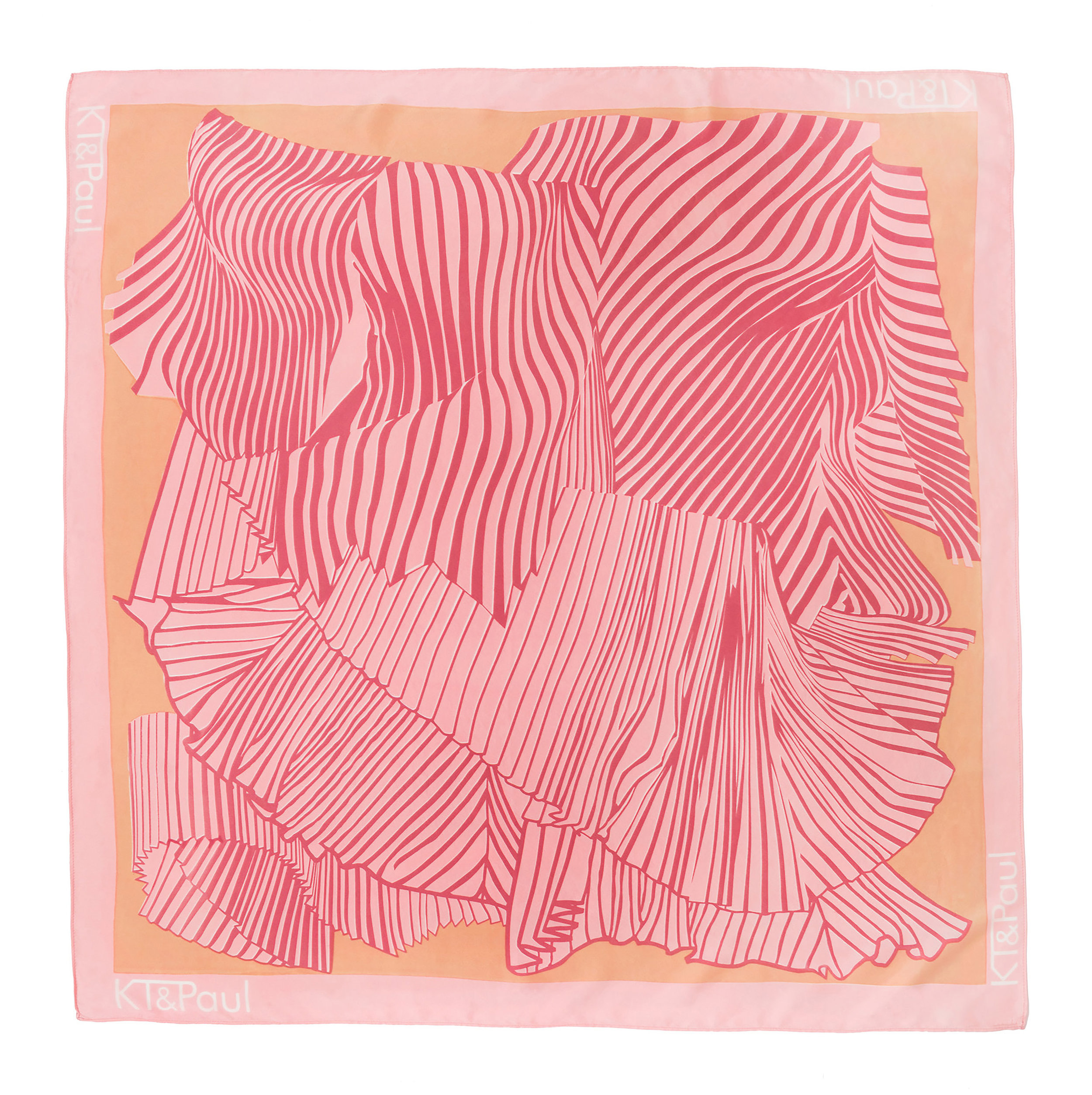Meet February's Featured Artist: Katie and Paul!
/I meet Katie and Paul Morris on a grey Sunday at their Vancouver studio. Space heaters chug along merrily as Turkish coffee heats on a portable stove. The beginnings of new projects decorate the walls, while a neat stack of screens sits in the corner. Originally from the UK, this husband and wife team have been designing and printing together for over 20 years, creating gorgeous, handmade screen printed and painted art.
été installation Pigment Hand screen print and painting on cotton canvas backed in Satin 2.5m x 1.5m
Talkative and engaging, Katie and Paul move between topics quickly, often finishing each other’s sentences. They do not shy away from talking about the pressures that go along with making a living as artists, and readily acknowledge their own vulnerabilities and lessons learned over the course of their long career. Since meeting at university in London while studying printed textiles and design, they have been committed to exploring the medium of printmaking together.
été silk scarf Edition of 3 Hand screen printed and painted on the finest silk charmeuse 120cm x 120cm
Pink Pleats Hand screen printed silk charmeuse scarf edition of 6 90cm X 90cm
From the time they relocated to Vancouver with their four children in 2011, Katie and Paul have drawn inspiration from the lush beauty of the Pacific Northwest. I learn that the city’s distinctive scenery has manifested itself into the couple’s latest work. A recent jaunt to the Vancouver Art Gallery’s outdoor garden left the pair entranced by the surreal juxtaposition of rain-battered garden furniture against the polished sounds of classical music playing in the background. From this scene, a new set of geometric drawings has begun to take shape.
The duo hasn’t always been free to create the art that they wanted to. Post-art school, they started their own business by printing silks for fashion designers. Paul says that “other people’s work always took precedent.” Making other people’s work was stressful, especially since the silk printing process can be quite temperamental. Things can (and do) easily go wrong. The couple once experienced the agony of working for hours on a set of silk scarves, only to have environmental factors such as moisture in the air completely ruin the batch. Katie and Paul never see setbacks like this as mistakes, but rather discoveries that keep their process progressive. Even after 20 years, they never stop fine-tuning.
Katie and Paul have built up quite an Instagram following over the last few years. Their videos, some with over a hundred thousand views, showcase the teamwork and technical skill involved in their creative process. The art typically takes form through Katie’s drawings, which Paul transplants onto acetate, a transparent film used for printmaking. The acetates then get exposed onto the screens, a screen for every colour in the piece. And then Katie and Paul come together for the time-consuming process of layering each colour, screen by screen. While a bit laborious in nature, the pair appreciates the process of working together in the studio. Katie says, “we’re not too intense. I really love working with Paul.” From across the room, Paul calls out, “oh Babycakes! That’s beautiful.”
Saturday Afternoon 10 colour hand screen print on 140lb acid free paper 40cm x 30cm edition of 100
While social media has helped the couple share their vibrant art with a larger audience, the experience has not come without its frustrations. As Paul says, “it’s a lot of smoke and mirrors with Instagram. We’re able to put on what we like, what we’re looking at. But it just seems to be oversaturated with work that looks the same.”
Paul came face-to-face with the reality of Instagram art trends at a show in London this year. “There was a girl on one side of me with a booth, and a guy on the other side of her, with just a dividing wall up between them. If you took the dividing wall down, it could have been exactly the same person’s work on both sides.” Both Katie and Paul note the importance of continuing to share their art’s story and plan to be more open on platforms like their newsletter.
Paradise Found Mixed media screen print and acrylic painting on 140lb acid-free cotton paper
The horizon looks bright for this duo. They say I have caught them at a moment of transition. The digital art side of their business has become successful enough that they feel less pressure to make profits from new work. They are shifting their focus towards projects that are more personal, directing their energy at taking all of the techniques they’ve learned over the past two decades and creating new art. “We’re confident now in what we like,” says Katie. “We’re able to go forward and give a bit more of ourselves in our art.” Looking around, it’s clear that their tactile pieces are a reflection of both their past and present.












